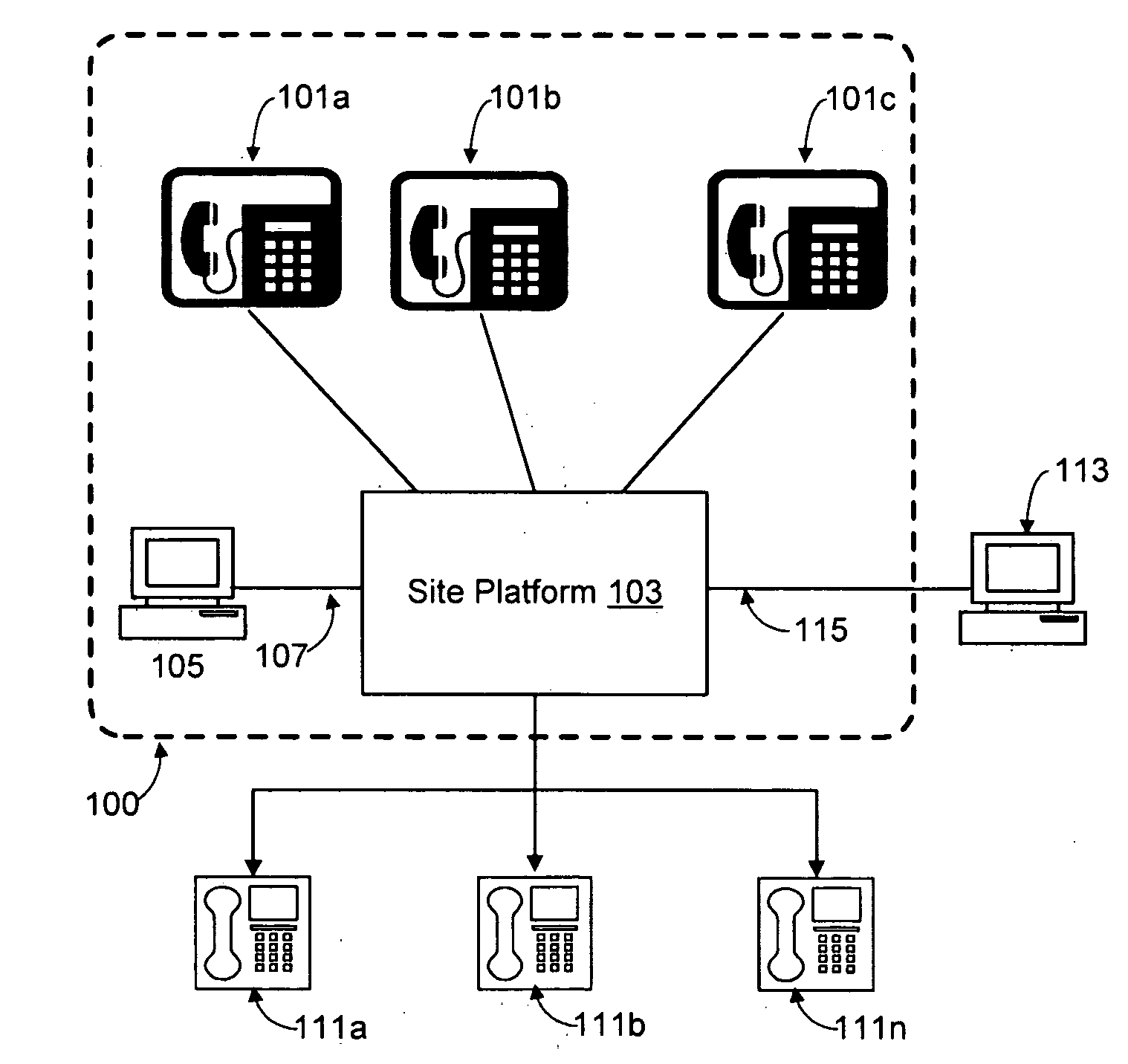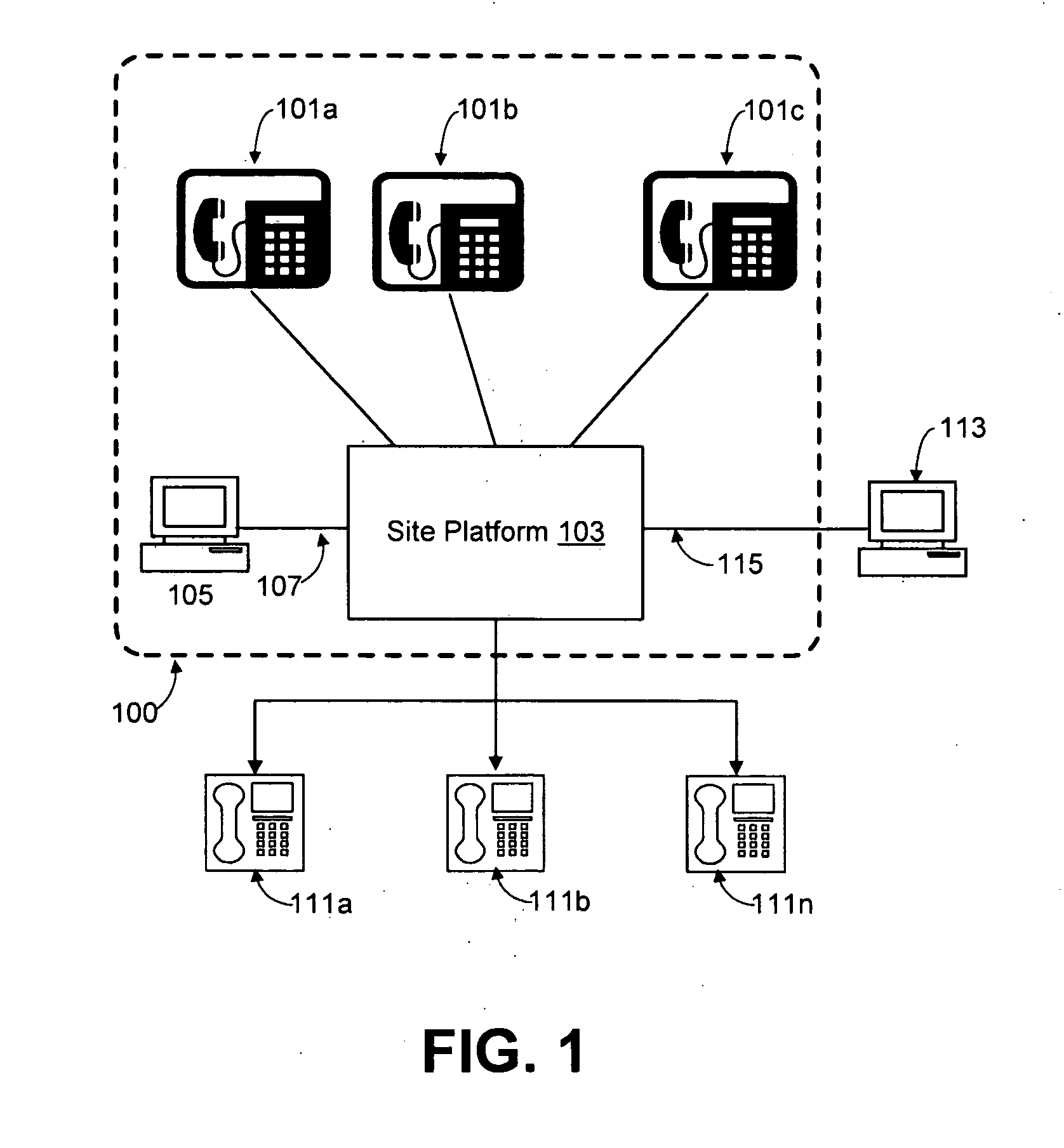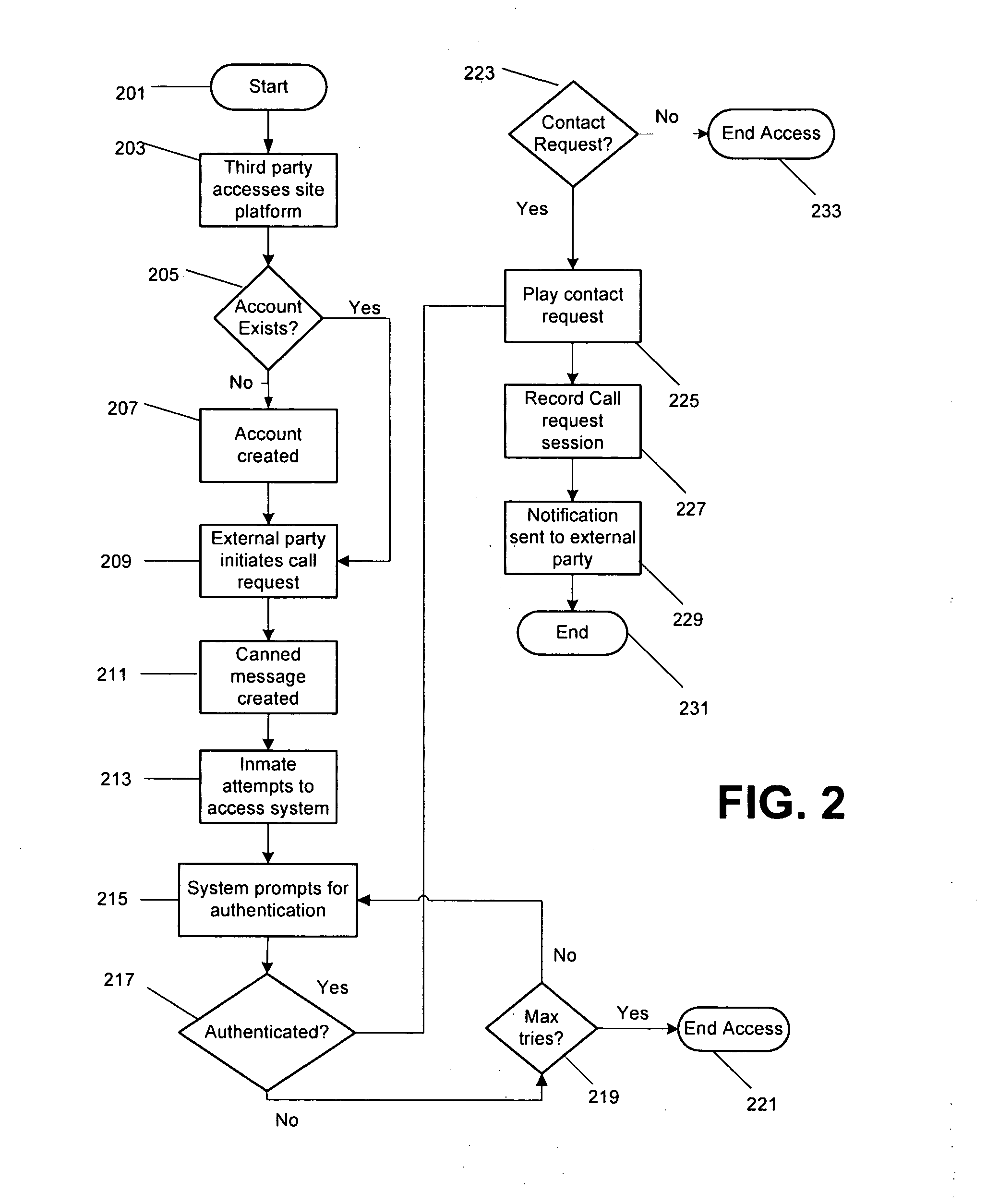Otherwise, unaccountable telephone costs would severely hinder the availability of the telephone systems in institutions.
However, the restrictions utilized by these systems result in overall inefficiency as two-thirds of the attempted calls go unanswered presenting a problem for both the system's users and the institution.
Thus, the communication system used in a regulated institution must employ unique functions often unnecessary in other types of institutions.
Generally, these simple systems are not equipped to
restrict an inmate from calling an individual.
It is well documented that without the necessary constraints on an inmate's use of the telephone system, inmates have often harassed outside parties or individuals.
The system may also limit the amount of time each inmate / user is permitted to conduct each outbound
telephone call through the system.
For example, if an inmate misbehaves, the inmate's telephone privileges may be further limited or revoked completely.
It is also foreseeable that the telephone numbers of the family members of these specific individuals may also be blocked.
Some current systems also limit the use of specific long distance carriers.
This feature prevents inmates from interacting with telephone games and lotteries, and in certain older systems, prevents the inmate from achieving an unrestricted dial tone.
Generally, while much effort has been made to establish controlled inmate telephonic communication, inmate
call management systems are inefficient.
These unanswered calls present a problem for inmates as they often count against their monthly limit thereby reducing the time available for inmates to talk to such people as family members.
It may take the inmate several attempts to successfully contact an outside party or the inmate may never successfully contact a desired outside party.
In addition, inmates and their outside contacts often complain of the difficulty to communicate via live telephone conversations as they are often several time zones away from each other.
Due to the lack of successful completions of calls (i.e., only one-third of attempted calls are successful), inmates try to find a way to get around the system resulting in even more restrictions placed on usage of the system.
Additionally, these unanswered calls present a loss of revenue for the institution, as it is difficult to charge for
system usage if the call is not answered.
The system attempts to locally automate and simplify the process of
payment for routing calls without live operator assistance, but does not address additional security concerns that may exist in specific facilities, such as in a penal institution.
Furthermore, it does not provide for protection measures to confirm that the individual supplying the account number is the individual entitled to the use of the account.
The system does not provide any means of monitoring the conversations taking place or restricting which individuals are accessed by the user.
Additionally, the system does not provide means for contact request from a third party for a specific inmate or notification to an outside party if the inmate's call is unanswered.
However, the system does not teach a means for selecting the call type or a call monitoring means.
It also fails to teach an advanced
verification means specific to a user.
Further, it does not provide a means of notification to the outside party if the inmate's call is not answered.
However, the system fails to provide a selection means for the user, such as the ability to choose the type of call to be placed (e.g., collect, debit, international, etc.).
It also fails to teach any call monitoring means and would therefore be unacceptable as a communication system for a penal institution.
Additionally, it does not teach any contact request / notification means.
However, the system does not teach a commissary system for use with a PSTN or any contact request / notification means.
This system also fails to teach multiple
authentication means and would therefore be unacceptable for use in a penal institution.
However, the system does not allow for other types of calls, such as collect calls, to take place.
Further, it fails to provide an advanced call monitoring apparatus with an advanced
authentication apparatus.
Also, it fails to teach a multi-mode communication notification means with a specific contact.
However, it does not identify or verify the individual speaking.
Furthermore, this system does not provide a means to identify the user or verify that the user is not partaking in fraudulent activities.
It also fails to teach of a monitoring,
call control, and contact request / notification means.
The system disclosed is further limited by its lack of
telephone call monitoring ability and calling party identification means, and is therefore unsuitable for use in penal institutions.
However, the system only enables live talk between parties and provides no means for contact requests by an outside party for a specific inmate and notification if a call is unanswered.
It is limited by detection of certain sounds, which may not be readily
machine-recognizable.
For example, it is foreseeable that interference,
background noise, or compressed
voice data may inhibit the detection of the tones.
Also, the system does not teach any method for multi-mode communication notification means.
However, it would be too costly to implement such a system in a penal institution or similar facility.
However, it does not address restrictions to the system or further monitoring means during use of the system, which are essential for systems within a penal institution.
These drawbacks severely limit the system's functionality making it both inefficient and difficult to implement into institutional settings.
 Login to View More
Login to View More  Login to View More
Login to View More 


